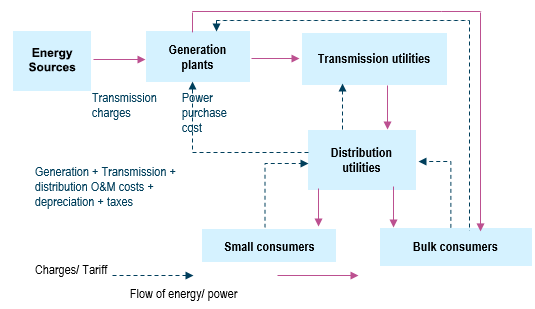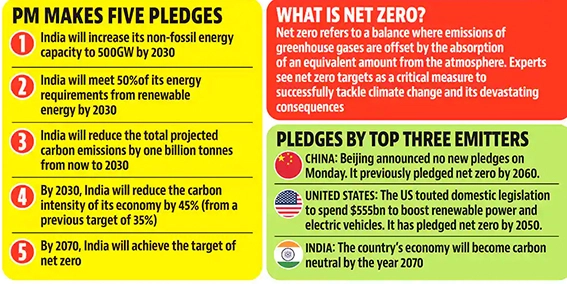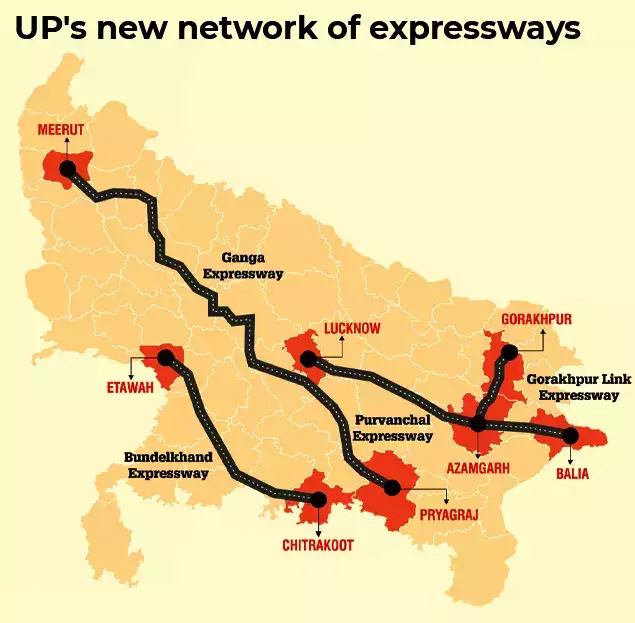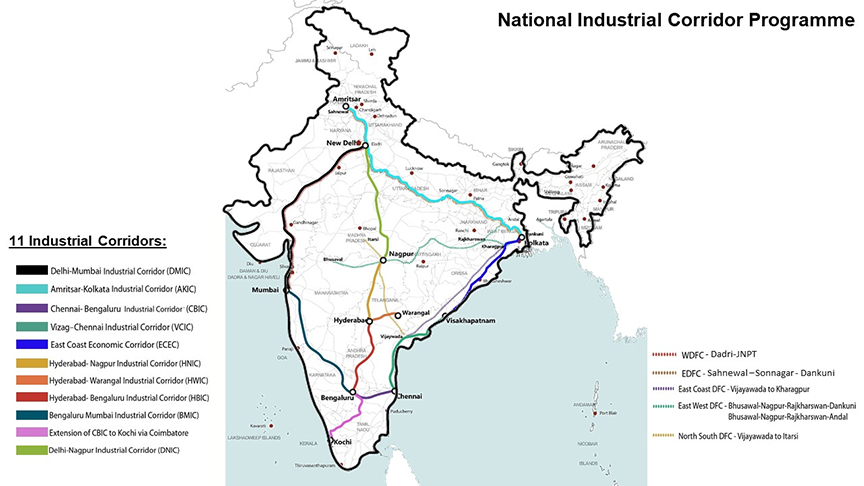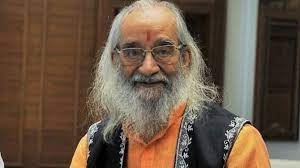International Relations
Biden-Xi Summit
Why in News
Recently, President Joe Biden of the United States and Chinese President Xi Jinping met for the first virtual bilateral meeting. The meeting ended with the clear divergences in the positions taken by the two sides.
- US-China confrontation is on multiple fronts including ideological and cultural hegemonic rivalry, trade wars which has often been called the New Cold War.
Key Points
- US’ Reservations Against China:
- Human Rights Violations: US raised concerns about the human rights violation practices in Xinjiang (Uighur Muslims), Tibet, and Hong Kong.
- Trade War: US’ trade deficit with China was around USD 375 billion for 2017. Due to this, former US President Donald Trump imposed import duties on Chinese exports to the US.
- The US president held that the need is to protect American workers and industries from China's unfair trade and economic practices.
- The US Treasury Department has declared China as a currency manipulator.
- Free and Open Indo-Pacific: China's assertiveness in South China Sea, claiming the majority of sea as its territory, has prompted the US to reiterate the importance of freedom of navigation and safe overflight to the region’s prosperity.
- Taiwan: China and Taiwan separated amid civil war in 1949 and China considers Taiwan part of its territory to be taken control of by force if necessary. However, Taiwan's leaders say that Taiwan is a sovereign state.
- The US remains committed to the ‘One China’ policy. However, it “strongly opposes unilateral efforts to change the status quo or undermine peace and stability across the Taiwan Strait”.
- China’s Reservations Against US:
- Alliances and Groupings: China has raised reservations regarding the alliances and groupings led by the US. China held that these groupings created “divisions” in the world.
- This was a reference to the Quad grouping, which includes US, India, Australia and Japan and the AUKUS deal among Australia, UK and US to deliver nuclear-powered submarines to Australia.
- Moreover, the US has recently proposed to expand G7 to G-11 without including China in it.
- Competition for Dominating World Finances: To counter the US-dominated International Monetary Fund, World Bank and World Trade Organization, China has come out with alternative financial institutions like Asia Infrastructure Investment Bank, and New Development Bank.
- Alliances and Groupings: China has raised reservations regarding the alliances and groupings led by the US. China held that these groupings created “divisions” in the world.
- US-India-China Relations:
- US Helping India address disputes with China: US aims to support India via military, diplomatic and intelligence channels to help address continental challenges such as the border dispute with China.
- US Supports India's reservations against Belt Road Initiative: US seeks the transparent infrastructure-debt practices in the countries facing debt due to Chinese financing under Belt Road Initiative.
- Build Back Better World (B3W) is an international infrastructure investment initiative announced by the Group of Seven (G-7) richest democracies in June 2021.
- The B3W initiative is being seen as the US' initiative to counter China's Belt and Road Initiative (BRI).
- Balancing China: The US is in favour of strong India, in cooperation with like-minded countries, which would act as a counterbalance to China in the strategic Indo-Pacific region.
- Due to this, India and the US have signed four fundamental defence agreements:
- Due to this, India and the US have signed four fundamental defence agreements:
Way Forward
- US-China’s Responsibility: It is the responsibility of leaders of China and the US to ensure that the competition between the countries does not veer into conflict, whether intended or unintended.
- India to Maintain Interest Oriented Balancing: India should realise its rising global power and rather than getting enmeshed in US-China rivalry, it should prioritize its own interests and growth by maintaining peaceful mutual relationships.


Indian Polity
Milestone for LGBTQ Rights
Why in News
The senior advocate Saurabh Kirpal could be be India’s first openly gay judge. After deferment for four times, the Supreme Court Collegium has finally recommended his name as judge of the Delhi High Court.
- Although conflict of interest was claimed as the excuse for deferment, it has been a popular argument in legal circles that the delay in recommending his name was due to his sexual orientation.
- If selected, his elevation will mark a key turning point in LGBTQ rights. LGBTQ is an acronym for lesbian, gay, bisexual, transgender and queer or questioning.
- Earlier, the European Parliament had declared the European Union an “LGBTIQ Freedom Zone”
Appointment of a High Court Judge
- Article 217 of the Indian Constitution states that the Judge of a High Court shall be appointed by the President in consultation with the Chief Justice of India (CJI), the Governor of the State, and, in the case of appointment of a Judge other than the Chief Justice, the Chief Justice of the High Court.
- The Second Judges Case (1993) introduced the Collegium system, holding that “consultation” really meant “concurrence”.
- It added that it was not the CJI’s individual opinion, but an institutional opinion formed in consultation with the two senior-most judges in the SC.
- Judges of the higher judiciary are appointed only through the collegium system and the government has a role only after names have been decided by the collegium.
- A High Court (HC) collegium is led by its Chief Justice and four other senior most judges of that court.
- The names recommended for appointment by a HC collegium reaches the government only after approval by the CJI and the SC collegium.
- The government’s role is limited to getting an inquiry conducted by the Intelligence Bureau (IB) if a lawyer is to be elevated as a judge in a High Court or the Supreme Court.
- Intelligence Bureau (IB): It is a reputed and established intelligence agency. It is authoritatively controlled by the Ministry of Home Affairs.
- It can also raise objections and seek clarifications regarding the collegium’s choices, but if the collegium reiterates the same names, the government is bound, under Constitution Bench judgments, to appoint them as judges.
Key Points
- Status of LGBTQ Rights in India:
- National Legal Services Authority Vs. Union of India (2014): The SC observed that “recognition of transgenders as a third gender is not a social or medical issue, but a human rights issue”.
- Navtej Singh Johar vs. Union Of India (2018): The SC decriminalised homosexuality by striking off parts of Section 377 of the Indian Penal Code (IPC) which were held violative of Fundamental Rights of LGBTQ Community.
- The SC held that Article 14 of the Constitution guarantees equality before law and this applies to all classes of citizens therby restoring ‘inclusiveness’ of LGBTQ Community.
- It also upheld the pre-eminence of Constitutional morality in India by observing that equality before law cannot be denied by giving precedence to public or religious morality.
- The SC stated that the ‘Yogyakarta Principles on the Application of International Law in Relation to Issues of Sexual Orientation and Gender Identity’ should be applied as a part of Indian law.
- Yogyakarta Principles recognise freedom of sexual orientation and gender identity as part of Human Rights.
- They were outlined in 2006 in Yogyakarta, Indonesia by a distinguished group of International Human Right experts.
- Tussle Over Same Sex Marraiges: In Shafin Jahan v. Asokan K.M. and others (2018) case, the SC observed that choice of a partner is a person’s fundamental right, and it can be a same-sex partner.
- However, in February, 2021, the Central Government opposed same-sex marriage in Delhi High Court stating that a marriage in India can be recognised only if it is between a “biological man” and a “biological woman” capable of producing children.
- Transgender Persons (Protection of Rights) Act, 2019: The Parliament has passed the Transgender Persons (Protection of Rights) Bill, 2019 which has been criticised for its poor understanding of gender and sexual identity.
- Challenges Faced by LGBTQ Community:
- Family: The problem of sexual orientation and gender identity leads to fighting and family disruption.
- Lack of communication and misunderstanding between parents and their LGBTQ children increases family conflict.
- Discrimination at Work Place: LGBTQ suffers from the socio-economic inequalities in large part due to discrimination in the workplace.
- Health Issues: Criminalisation of homosexuality leads to discrimination and results in LGBTQ people getting poor or inadequate access to services within the health system.
- It also creates barriers to both the availability and the ability to access HIV prevention, testing and treatment services.
- Isolation and Drug Abuse: They gradually develop low self-esteem and low self-confidence and become isolated from friends and family.
- These people mostly get addicted to drugs, alcohol, and tobacco to get themselves relieved of stress and rejection and discrimination.
- Family: The problem of sexual orientation and gender identity leads to fighting and family disruption.
Way Forward
- The LGTBQ community needs an anti-discrimination law that empowers them to build productive lives and relationships irrespective of gender identity or sexual orientation and place the onus to change on state and society and not the individual.
- Government bodies, especially related to Health, and Law and Order need to be sensitised to ensure that the LGBTQ community is not denied public services or harassed for their sexual orientation.
Indian Economy
Renewable Energy Production by Thermal Power Plants
Why in News
Recently, Ministries of Power and New and Renewable Energy released guidelines which allows thermal generation companies to set up renewable energy generation capacity and supply power to consumers under existing Power Purchase Agreements (PPAs).
Key Points
- Guidelines:
- Thermal Energy Producer to Produce Green Energy: The new guidelines allow thermal generation companies“to set up renewable energy generation capacity either by themselves (or) through developers by open bids and supply power to consumers under existing PPAs.
- A Power Purchase Agreement (PPA), or electricity power agreement, is a contract between two parties, one which generates electricity (power generating companies (gencos)) and one which is looking to purchase electricity (Discoms).
- Complements Discoms’ RPOs: The discoms would be allowed to count renewable energy purchased under the scheme towards their Renewable Purchase Obligation (RPO).
- RPO is a mechanism by which the State Electricity Regulatory Commissions are obliged to purchase a certain percentage of power from renewable energy sources.
- RPO is being implemented throughout the country to create demand for renewable energy.
- RPO Targets: Under the long-term growth trajectory of RPOs, states have been asked to increase the proportion of power procured from renewable sources to 21.2% of their total procurement in FY2022.
- Funds Sharing with Discoms: Any savings to thermal power plants from lower cost of power generation through renewable energy would be shared with discoms on a 50:50 basis.
- Thermal Energy Producer to Produce Green Energy: The new guidelines allow thermal generation companies“to set up renewable energy generation capacity either by themselves (or) through developers by open bids and supply power to consumers under existing PPAs.
Structure of Power Sector
- Significance:
- Green Energy Push: This will enable the replacement of fossil fuel based energy by renewable energy under the existing PPAs.
- Synergy with Global Commitments: The move is aimed at boosting the installed capacity of renewable energy to 500 GW by 2030 in line with commitments made by the Indian Prime Minister at the COP26 climate change conference.


Social Justice
Campaign on SafaiMitra Suraksha Challenge
Why in News
Recently, the Ministry of Housing and Urban Affairs (MoHUA) has launched a week-long awareness campaign on SafaiMitra Suraksha Challenge (SSC) as part of the ‘World Toilet Day’ (19th November) celebrations, to run up to the ‘Swachh Amrit Diwas’.
- The Swachh Amrit Diwas is an award ceremony to recognize the role and efforts of the states, cities, ULBs (Urban Local Bodies) and Cantonment Board in Swachh Survekshan 2021, and Garbage Free Star Rating certification on 20th November 2021.
World Toilet Day
- In 2013, the United Nations General Assembly officially designated 19th November as World Toilet Day. It is coordinated by UN-Water in collaboration with governments and partners.
- It aims to break the stigma around sanitation as the silence around the issue of toilets and sanitation has deadly consequences.
- The theme for the year 2021 is about valuing toilets.
Key Points
- About:
- A total of 246 cities are participating in SSC which is being conducted across the country. The state capitals, urban local bodies and smart cities will be eligible to participate.
- Cities will be awarded in three sub-categories – with a population of more than 10 lakhs, 3-10 lakhs and upto 3 lakhs, with a total prize money of Rs. 52 crore.
- It is one of the government efforts to combat manual scavenging.
- SafaiMitra Suraksha Challenge (SSC):
- SSC was launched on 19th November 2020 on the occasion of World Toilet Day.
- SSC is aimed to encourage cities to mechanise their sewer and septic tank cleaning operations in order to prevent deaths and fatalities of sanitation workers from ‘hazardous entry’.
- The Government launched this “challenge” for all states to make sewer-cleaning mechanised by April 2021 — if any human needs to enter a sewer line in case of unavoidable emergency, proper gear and oxygen tanks, etc., are to be provided.
- Initiatives Taken:
- Under SSC, National Safai Karamcharis Finance & Development Corporation (NSKFDC), Ministry of Social Justice and Empowerment, supported by MoHUA are organizing Loan Melas across the country.
- The aim is to help Safaimitras avail loans under the Swachhata Udyami Yojana (SUY) for procurement of sewer/ septic tank cleaning machine/ equipment for mechanized cleaning.
- Skill development training of Safaimitras have also been conducted through the support of the Ministry of Social Justice and Empowerment via NSKFDC in 115 cities.
- Call Centre and Helpline number have been operationalized in 345 cities for safe cleaning of septic tanks/sewers and registering complaints on hazardous cleaning.
- 31 states/UTs have established a Responsible Sanitation Authority (RSA) and 210 cities are having the Sanitation Response Units (SRU).
- All 246 participating cities have already notified a ban on single-use plastic (SUP).
- Under SSC, National Safai Karamcharis Finance & Development Corporation (NSKFDC), Ministry of Social Justice and Empowerment, supported by MoHUA are organizing Loan Melas across the country.
Manual Scavenging
- About:
- Manual scavenging is defined as “the removal of human excrement from public streets and dry latrines, cleaning septic tanks, gutters and sewers”.
- The practise of manual scavenging is linked to India’s caste system where so-called lower castes were expected to perform this job.
- Officially, the number of manual scavengers dropped to 42,303 in 2018 from 7,70,338 in 2008. The survey of manual scavengers in 2018 was conducted by the NSKFDC.
- Related Initiatives:
- The Prohibition of Employment as Manual Scavengers and their Rehabilitation (Amendment) Bill, 2020:
- It prohibits construction or maintenance of insanitary latrines, and employment of any person for manual scavenging or hazardous cleaning of sewers and septic tanks.
- The Prohibition of Employment as Manual Scavengers and their Rehabilitation Act, 2013:
- The act seeks to reinforce the prohibition of manual scavenging in all forms and ensures the rehabilitation of manual scavengers.
- Prevention of Atrocities Act:
- It delineates specific crimes against Scheduled Castes and Scheduled Tribes.
- National Commission of Safai Karamcharis:
- The Commission is acting as a non-statutory body of the Ministry of Social Justice and Empowerment whose tenure is extended from time to time through Government Resolutions.
- Swachh Bharat Mission:
- Swachh Bharat Abhiyan is a national campaign launched by the Government on 2nd October, 2014 to clean the streets, roads and build social infrastructure of the country.
- The Prohibition of Employment as Manual Scavengers and their Rehabilitation (Amendment) Bill, 2020:
Indian Polity
First Audit Diwas: CAG
Why in News
Recently, the Prime Minister unveiled the statue of Sardar Vallabhbhai Patel at the office of the Comptroller and Auditor General (CAG) of India to mark the First Audit Diwas (16th November, 2021).
- It is celebrated to mark the historic origins of the institution of the CAG. It aims to highlight the rich contributions of the CAG to boost transparency and good governance.
- Girish Chandra Murmu assumed office as the Comptroller and Auditor General of India on 8th August 2020.
Key Points
- Constitutional Body: Article 148 provides for an independent office of the CAG. It is the supreme audit institution of India.
- Other Provisions Related to CAG include: Articles 149-151 (Duties & Powers, Form of Accounts of the Union and the States and Audit Reports), Article 279 (calculation of net proceeds, etc.) and Third Schedule (Oath or Affirmation) and Sixth Schedule (Administration of Tribal Areas in the States of Assam, Meghalaya, Tripura and Mizoram).
- Profile in Brief:
- CAG: Head of the Indian Audit and Accounts Department - created in 1753.
- Guardian of the public purse and controls the entire financial system of the country at both the levels–the Centre and the state.
- One of the bulwarks of the democratic system of government in India.
- The others being the Supreme Court, the Election Commission and the Union Public Service Commission.
- The accountability of the executive (i.e. Council of Ministers) to the Parliament in the sphere of financial administration is secured through audit reports of the CAG.
- Appointment: Appointed by the President of India by a warrant under his hand and seal.
- Tenure: A period of six years or upto the age of 65 years, whichever is earlier.
- Removal: CAG can be removed by the President on the same grounds and in the same manner as a judge of the Supreme Court. He does not hold his office till the pleasure of the President.
- In other words, he can be removed by the President on the basis of a resolution passed to that effect by both the Houses of Parliament with special majority, either on the ground of proved misbehaviour or incapacity.
- Other Related Points:
- Not eligible for further office, either under the Government of India or of any state, after he ceases to hold his office.
- Salary and other service conditions are determined by the Parliament.
- The administrative expenses of the office of the CAG, including all salaries, allowances and pensions of persons serving in that office are charged upon the Consolidated Fund of India (thus are not subject to the vote of Parliament).
- No minister can represent the CAG in Parliament.
- Duties & Powers as also under the CAG’s (Duties, Powers and Conditions of Service) Act, 1971:
- Audits the accounts related to all expenditure from the Consolidated Fund of India, consolidated fund of each state and consolidated fund of each union territory having a Legislative Assembly.
- Audits all expenditure from the Contingency Fund of India and the Public Account of India as well as the contingency fund of each state and the public account of each state.
- Audits profit and loss accounts, balance sheets and other subsidiary accounts kept by any department of the Central Government and state governments.
- Audits the receipts and expenditure of the following:
- Bodies and authorities substantially financed from the Central or state revenues,
- Government companies, and
- Other corporations and bodies, when so required by related laws.
- Audits the accounts of any other authority when requested by the President or Governor. For example, the audit of local bodies.
- Acts as a guide, friend and philosopher of the Public Accounts Committee of the Parliament.
- Limitation:
- The Constitution of India visualises the CAG to be Comptroller as well as Auditor General. However, in practice, the CAG is fulfilling the role of an Auditor-General only and not that of a Comptroller.
- In other words, the CAG has no control over the issue of money from the consolidated fund and many departments are authorised to draw money by issuing cheques without specific authority from the CAG, who is concerned only at the audit stage when the expenditure has already taken place.
- In this respect, the CAG of India differs totally from the CAG of Britain who has powers of both Comptroller as well as Auditor General.
- In other words, in Britain, the executive can draw money from the public exchequer only with the approval of the CAG.


Indian Economy
Purvanchal Expressway: UP
Why in News
Recently, the Prime Minister inaugurated the Purvanchal Expressway in Uttar Pradesh.
Key Points
- About:
- It starts from Chandsarai village, located near the existing Lucknow-Sultanpur Road (NH-731), in Lucknow district and it ends at Haidaria village on National Highway 31 in Ghazipur, 18 km from the UP-Bihar border, in Ghazipur district.
- The expressway will connect with the existing Agra-Lucknow and Agra-Noida Yamuna expressways to form an industrial corridor, providing connectivity from the eastern to western borders of UP.
- An industrial corridor is basically a corridor consisting of multi-modal transport services that would pass through the states as main arteries.
- The districts falling on this greenfield expressway are Lucknow, Barabanki, Amethi, Sultanpur, Ayodhya, Ambedkar Nagar, Azamgarh, Mau and Ghazipur.
- Features of the Expressway:
- It will have CNG stations, electric recharge stations for vehicles and will be connected with the defence corridor through the Agra and Bundelkhand expressways.
- Expected Benefits:
- The eastern region of the state would not only be connected to Lucknow but also further to the National Capital through Agra-Lucknow and Yamuna Expressways.
- It is going to give a boost to the economic development of the eastern parts of Uttar Pradesh.
- The expressway will provide better and quick access to bigger markets for agri commodities and other products manufactured in the region.
- UP's New Network of Expressways:
- Besides Purvanchal, at least three more expressways, besides the proposed defence corridor and already operational Agra-Lucknow and Yamuna expressways, are in various stages of completion in UP.
- The Uttar Pradesh Expressways Industrial Development Authority (UPEIDA) has been given the responsibility of completing these projects.
- UPEIDA has been set up under the UP Industrial Area Development Act.
Industrial Corridor
- About:
- India is developing various Industrial Corridor Projects as part of the National Industrial Corridor programme.
- National Industrial Corridor Development Programme is India's most ambitious infrastructure programme aiming to develop new industrial cities as "Smart Cities" and converging next generation technologies across infrastructure sectors.
- Aim:
- It is aimed at development of futuristic industrial cities in India which can compete with the best manufacturing and investment destinations in the world.
- The same will create employment opportunities and economic growth leading to overall socio-economic development.
- Implementing Agency:
- The development of these eleven industrial corridor projects will be implemented through the National Industrial Corridor Development and Implementation Trust (NICDIT).
- Industrial corridors constitute world-class infrastructure, such as:
- High-speed transportation network – rail and road
- Ports with state-of-the-art cargo handling equipment
- Modern airports
- Special economic regions/industrial areas
- Logistic parks/transhipment hubs
- Knowledge parks focused on catering to industrial needs
- Complementary infrastructure such as townships/real estate
- Other urban infrastructure along with enabling policy framework
Important Facts For Prelims
Pochampally is One of the Best Tourism Villages: UNWTO
Why in News
Recently, Pochampally village in Telangana was selected as one of the Best Tourism Villages by United Nations World Tourism Organisation (UNWTO).
- The award will be given on the occasion of the 24th session of the UNWTO General Assembly in December 2021 in Madrid, Spain.
- The Union Ministry of Tourism has also drafted a Rural Tourism Policy which will not only promote tourism within our villages but also revitalise local arts and crafts and promote rural economy.
- Earlier, Rudreswara Temple, (also known as the Ramappa Temple) at Mulugu district, Telangana was inscribed on UNESCO's World Heritage list.
Key Points
- Pochampally Village:
- Pochampally in Nalgonda district is often referred to as the silk city of India for the exquisite sarees that are woven through a unique style called Ikat.
- This style, Pochampally Ikat, received a Geographical Indicator (GI Status) in 2004.
- Pochampally’s unique weaving styles and patterns received special focus through the Prime Minister’s mantra of Vocal 4 Local as a part of Atmanirbhar Bharat.
- In 2015, to recognise the diversity of weaving techniques and our rich handloom tradition, the Prime Minister inaugurated the first National Handloom Day on 7th August as a tribute to the formal proclamation of the Swadeshi Movement that was made in a meeting at the Calcutta Town hall on the same day in 1905.
- Pochampally is also known as Bhoodan Pochampally to commemorate the Bhoodan Movement that was launched by Acharya Vinobha Bhave from this village on 18th April, 1951.
- Vinoba Bhabe was the first international figure to receive the Ramon Magsaysay Award in 1958. He was awarded Bharat Ratna posthumously in 1983.
- The Ministry of Tourism recommended three villages for the UNWTO Best Tourism Village entry from India. However Pochampally, was awarded as one of the best Tourism Villages by UNWTO.
- These were Kongthong in Meghalaya, Ladhpura Khas, Madhya Pradesh and Pochampally in Telangana.
- Pochampally in Nalgonda district is often referred to as the silk city of India for the exquisite sarees that are woven through a unique style called Ikat.
- Best Tourism Villages Initiative:
- It is a Pilot initiative by UNWTO to highlight those villages where tourism preserves cultures and traditions, celebrates diversity, provides opportunities and safeguards biodiversity.
- It aims to award those villages which are outstanding examples of rural destinations and showcase good practises in line with its specified nine evaluation areas.
- It also aims to support villages to enhance their rural tourism potential through training and access to opportunities for improvement.
United Nations World Tourism Organisation
- It is the United Nations Specialised Agency responsible for the promotion of responsible, sustainable and universally accessible tourism.
- It was established in 1975 with headquarters at Madrid, Spain.
- UNWTO encourages the implementation of the Global Code of Ethics for Tourism, to maximize tourism’s socio-economic contribution while minimizing its possible negative impacts.


Important Facts For Prelims
‘Duare Ration’ Scheme: WB
Why in News
Recently, the West Bengal government launched the ‘Duare Ration’ (ration at doorstep) scheme for providing food grains under the Public Distribution System (PDS) at the doorstep for the entire population of the State.
- A mobile application, "Khadya Sathi: Amar Ration Mobile App" to help people apply for ration cards, was also launched.
Key Points
- Under the scheme, dealers would deliver ration at the doorstep of the beneficiaries.
- There are around 21000 rational dealers in the state and the government would provide a subsidy of Rs. 1 lakh to each dealer to purchase a delivery vehicle.
- Ration dealers will also be allowed to recruit two assistants for which state would pay half their salaries.
- Each vehicle would be parked at a convenient location in a neighbourhood so that residents need not walk more than 500 metres to avail the ration.
- It is expected to benefit around 10 crores of people of the state.
Public Distribution System
- It is a government managed process of ensuring that food, staples, grains and other necessities are being provided to the poorer sections of the society in India.
- Food and some non-food items are provided at a subsidised rate through a chain of Fair Price Shops (FPS) or Ration Shops.
- The system is managed by the Ministry of Consumer Affairs, Food and Public Distribution.
- The state and the central governments work hand in hand to provide food grains and other essential items at low prices for communities that are under and just above the poverty line.
- The Central Government takes the responsibility to procure, preserve, transport and allocate the resources.
- The State Government ensures the setting up of a network of recognition and availability of these rations via cards and shops.
- The centre procures food grains from farmers at a Minimum Support Price (MSP) and sells it to states at central issue prices.
- Under the PDS, presently the commodities namely wheat, rice, sugar and kerosene are being allocated to the States/UTs for distribution.
- Some States/UTs also distribute additional items of mass consumption through the PDS outlets such as pulses, edible oils, iodized salt, spices, etc.
- The National Food Security Act, (NFSA) 2013 legally entitles upto 75% of the rural population and 50% of the urban population to receive subsidized foodgrains under Targeted Public Distribution System.
Important Facts For Prelims
Babasaheb Purandare
Why in News
Babasaheb Purandare, a noted Historian and writer of India, has passed away recently.
Key Points
- About:
- Balwant Moreshwar Purandare, born on 29th July 1922 in Maharashtra, popularly known as Babasaheb Purandare.
- He was an author and a historian and was known for his work on Chhatrapati Shivaji Maharaj.
- He is famously entitled as Shiv Shahir i.e. ‘Shivaji’s poet’.
- His famous work:
- He is known as an eminent authority on the Maratha King Chhatrapati Shivaji and started writing on his life and achievements at a very young age. He published a book called Thinagya which translates to Sparks on Shivaji.
- Other works of Babasaheb include books titled Raja Shiva Chatrapati and Kesari along with the book Narayanrao Peshwa.
- Apart from this, he is best known for his drama Jaanta Raja which has been enacted in 5 languages, since 1985. It was originally written in Marathi.
- For this drama, he also received the Kalidas Samman from the Government of Madhya Pradesh in 2007-08.
- Awards & Honours:
- In 2019, he was awarded Padma Vibhushan, India’s second-highest civilian award.
- In 2015, he was awarded with Maharashtra Bhushan Award. It is Maharashtra’s highest Civilian Award.



